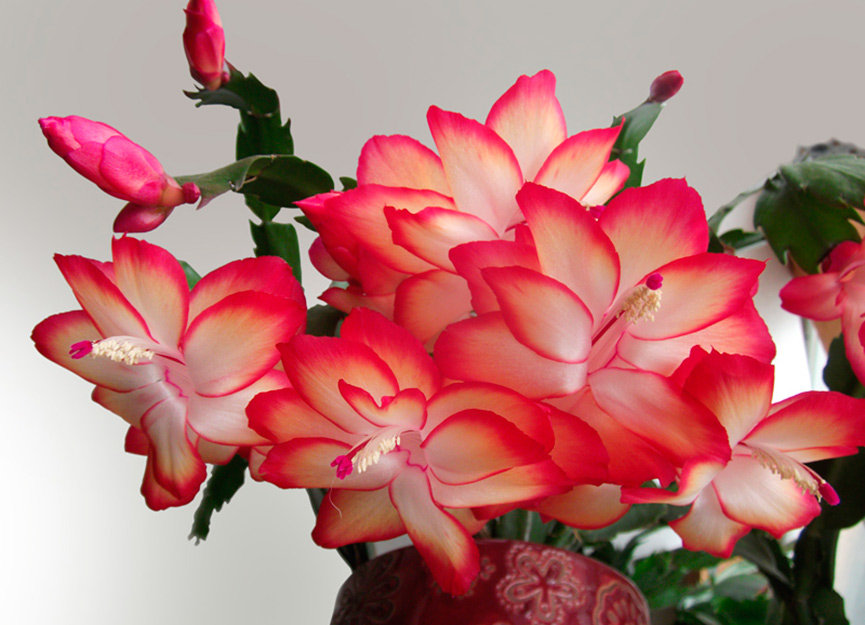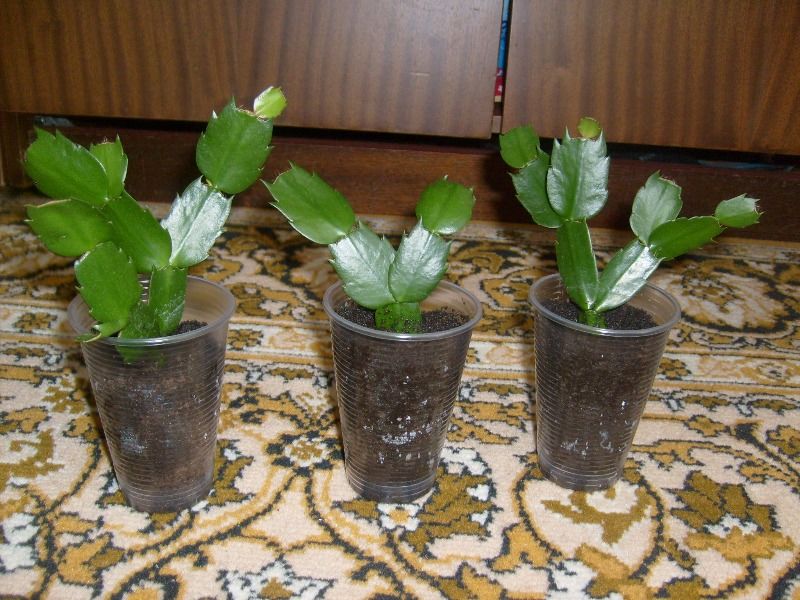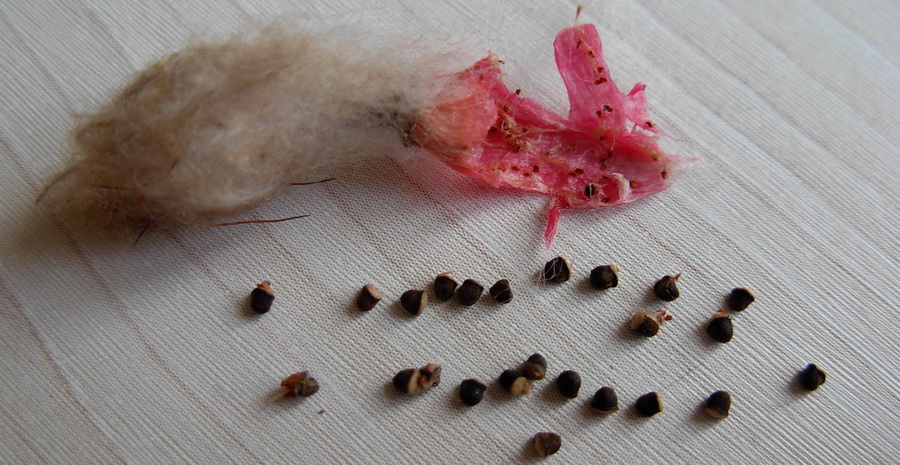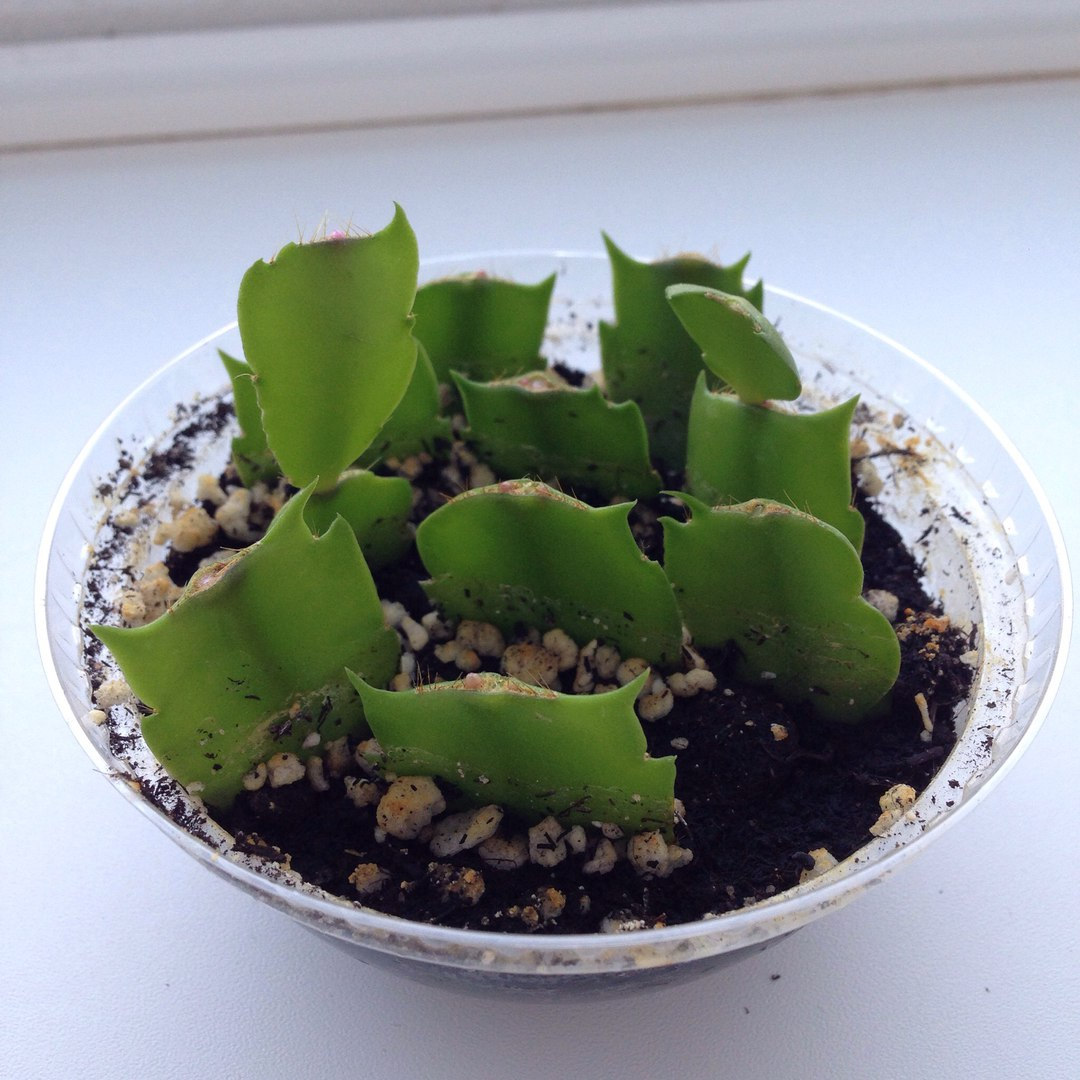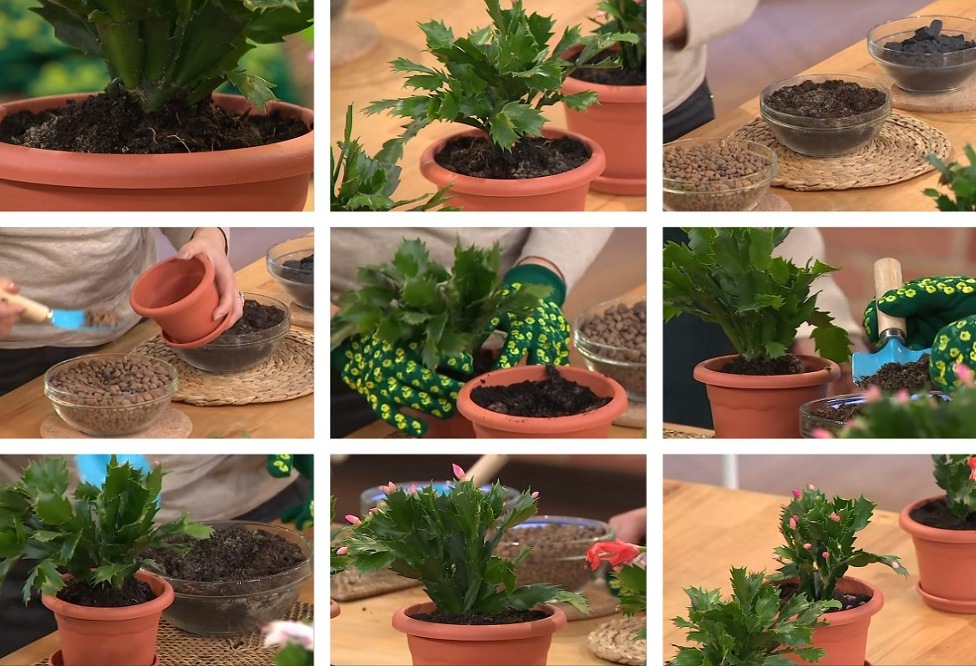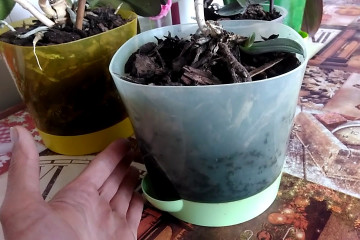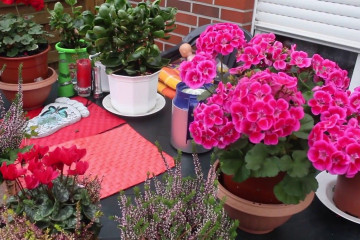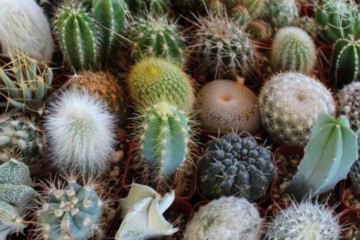How to propagate a Decembrist at home
Content:
The Decembrist is a forest cactus that blooms all winter. With long-term cultivation of a flower, it becomes necessary to breed it. The best time for reproduction of the Decembrist at home is the end of February.
Popular seating methods
Decembrist is not the most common plant that grows at home. When most indoor flowers begin a dormant period, the Decembrist, on the contrary, begins a period of activity. This should be taken into account when breeding the plant.
For beginners, it is better to start with simple ways of propagating the Decembrist - by cuttings or seeds. For other methods, knowledge and experience are required.
Propagation of the Decembrist by cuttings
The easiest way to propagate a Decembrist flower at home is with apical cuttings. The plant is very unpretentious, cuttings quickly give roots and take root in a new place.
Propagation by apical cuttings
With this dilution, cuttings can be rooted in two ways - in water and in soil. In both cases, the roots appear equally quickly.
How to propagate the Decembrist by cuttings:
- Prepare long twigs with lots of leaves.
- Do not cut the stalk, but break it off with your hands at the base of the stem.
- Put it in a glass of water.
- Change the fluid regularly so that it does not deteriorate.
- When the roots appear after 2 weeks, the cutting can be transplanted into the ground.
If the cuttings are planned to be rooted in the soil, they are first left on the windowsill for 2 days. Then they are transplanted into the ground and covered with a cut bottle (it is regularly removed to ventilate the soil).
Seed propagation
When choosing this method, planting material can be collected from a home plant.
How to plant a Decembrist in a seed way:
- Before planting, rinse the seeds in a solution of potassium permanganate, then warm them up.
- Plant the seeds in the ground, cover the container with a bag.
- Remove the bag several times a week to water and ventilate the soil.
- When sprouts appear, remove the bag.
Transplanting seedlings is carried out after the seedlings have grown and grown stronger.
Propagation by air layers
This method is similar to propagation by cuttings.
How to take a scion from a Decembrist:
- Water the flower abundantly.
- The next day, break off a few leaves from the plant.
- Then proceed to planting.
How the Decembrist flowers reproduce by layering:
- Break off a leaf with thin white roots.
- It is planted in potting soil for indoor plants.
- Sprinkle abundantly and cover with a cut bottle.
- Several times a week, the bottle is removed to ventilate the soil. If this is not done, mold will develop.
Reproduction of the Decembrist leaf
The step-by-step process of propagating a plant from a leaf is similar to planting cuttings and air layers.
How to plant a Decembrist from a leaf:
- Tear off a large and healthy leaf.
- Put it in Kornevin's solution.
- Plant half of the entire length into the ground with expanded clay.
- When the roots appear, transplant the sheet into the ground to a permanent place.
This breeding method is the least popular, and few growers use it. It is not known whether the roots will appear from the leaflet, and whether it will rot.
Plant propagation by part of the root
This method can be used if the Decembrist fell ill and wilted, but the root remained intact.
How the Decembrist reproduces by part of the root:
- Mix peat with turf and coarse sand.
- Water the soil.
- If there are damaged areas on the roots, cut them off.
- Place the root in a solution of potassium permanganate for 20-30 minutes.
- Dry it, sprinkle the cuts with charcoal.
- Plant the rootlet shallowly into the ground and water.
- Put a cut bottle on top of the container to make a greenhouse.
Rooting process and planting
When the seedlings get stronger and grow up, you can start transplanting them to a permanent place. First you need to prepare the ground and choose a pot. The capacity should be wide and low. The root system is located in the top layer of the soil, so deep pots are not suitable for the plant.
How to prepare the soil:
- Combine peat and sod land in equal parts.
- Add two pieces of leafy land.
- Pour in a little crushed charcoal.
- Add expanded clay to keep the soil breathable.
- Mix everything thoroughly to get a homogeneous substrate.
Decembrist prefers slightly acidic soil, therefore, before planting, you need to test the soil for acidity. This can be done using special strips that are sold in gardening stores.
How to root a Decembrist without roots:
- If the roots are poorly developed, the seedlings can be put in a growth activator (Kornevin, Epin) for a day.
- Dry the seedling and plant it in the ground.
- Cover with a bag. Thanks to the heat, the root system will develop more actively.
- Remove the bag periodically to ventilate the ground.
- When the seedling is strong enough, transplant it.
Follow-up care of seedlings
Without properly organized care, seedlings will take longer to take root. After transplanting, they are regularly watered with warm, settled water. The main thing is not to overmoisten the soil. Once a month, fertilizers can be applied to the soil for flowering indoor plants and Decembrists.
Another important point is lighting and room temperature. The flower prefers partial shade or shade. Placing pots on sunny windows is undesirable. The foliage may burn. The flower does not need additional illumination in winter; only a decrease in sunlight is needed to lay the buds. The optimum temperature is from +17 to +25 degrees.
Diseases and pests during the reproduction of the Decembrist
A Decembrist flower, reproduction at home of which was abnormal, will not grow normally. If an unpleasant odor begins to emanate from the cutting, it means that there is a fungal infection on it. If it is not there, the root system may have wilted. Sometimes this happens due to irrigation of a flower with cool water or finding a pot with a plant in a draft.
If the plant begins to wilt, there can be two reasons. First, the flower fell ill with late blight. Second, the plant was irrigated with ice water or overheated in the sun. The root system can be burned with highly concentrated fertilizing solutions.
Fortunately, there are many ways to propagate the Decembrist. Almost all of them are very simple. Young plant bushes quickly take root in a new place, regardless of the chosen breeding method.
